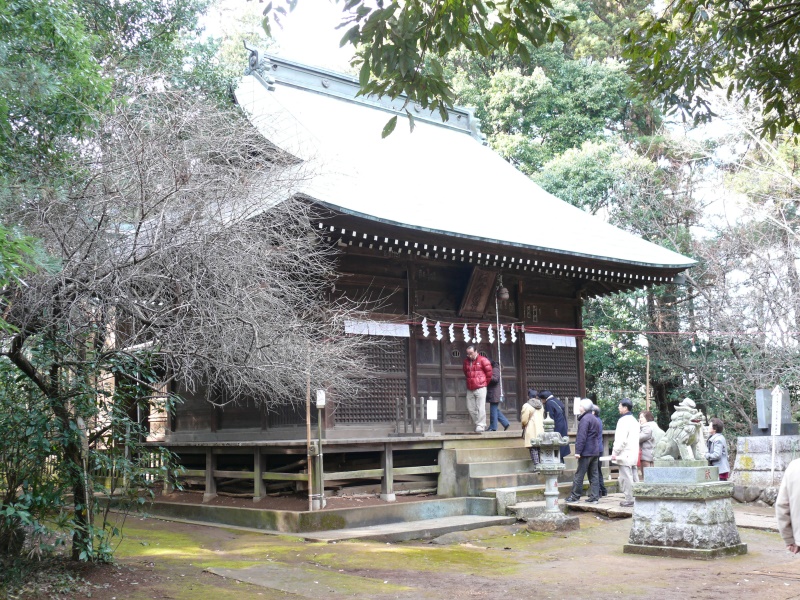- Hatogamine Hachiman Shrine
Infobox religious building
building_name = Hatogamine Hachiman Shrine
infobox_width = 100px

image_size = 350px
caption = Hatogamine Hachiman Shrine Main Hall
map_type =
map_size =
map_caption =
location =
geo = coor dms|35|46|37|N|139|27|28|E
latitude =
longitude =
religious_affiliation = Shinto (Japanese)
rite =
region =
state =
province =
territory =
prefecture =Saitama
sector =
district =
cercle =
municipality =Tokorozawa
consecration_year = 921
status =
functional_status =
heritage_designation =
leadership =
website =
architecture =
architect =
architecture_type =
architecture_style =
general_contractor =
facade_direction =
groundbreaking =
year_completed = Before 1232
construction_cost =
specifications =
capacity =
length =
width =
width_nave =
height_max =
dome_quantity =
dome_height_outer =
dome_height_inner =
dome_dia_outer =
dome_dia_inner =
minaret_quantity =
minaret_height =
spire_quantity =
spire_height =
materials = Wood
nrhp =
added =
refnum =
designated =nihongo|Hatogamine Hachiman Shrine|鳩峰八幡神社|Hatogamine Hachiman Jinja is an ancient Japanese
Shinto shrine inTokorozawa, Saitama .History
Hatogamine
Hachiman Shrine is believed to date to921 A. D. when a ground purification ceremony was held there. Shrine records state that it was repaired in year1232 and that in the year1333 the famousSamurai commanderNitta Yoshisada prayed at the shrine during theKōzuke-Musashi Campaign against the KamakuraShogunate . The nihongo|“Kabutokakeno Pine Tree"|兜掛松|Kabutokakeno Matsu on the grounds is believed to date from that time and is where Nitta hung his helmet while praying.In year
1591 when the future ShogunTokugawa Ieyasu began the tradition of donating lumber for the shrine that was maintained by every Shogun until the end of theEdo Period in1867 .The main hall rests on a wooded hilltop and dates before
1333 and is one of the few such ancient structures in Saitama.The shrine is dedicated to the Shinto gods
Hondawakano-mikoto ,Himegami , andKinagatarashihimenno-mikoto .Festivals
The major festivals and Suitengu held are:
* January 1 – Gantansai (New Year’s Festival)
* January 5 – Reitaisai (Annual Festival /Daruma Fair)
* March 15 – Harumatsuri (Spring Festival)
* April 15 – Reitaisai (Annual Festival)
* July 15 – Natsu-Matsuri (Summer Festival)
* September 15 – Aki-matsuri (Autum Festival)
* November 23 – NiinamesaiReferences
* Tokorozawa Hatogamine Hachiman Shrine Records
* Tokorozawa Tourist Association
Wikimedia Foundation. 2010.
